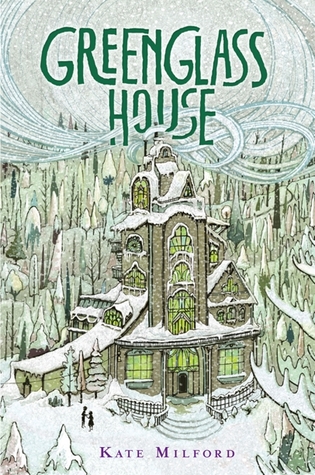
Title: Salt to the Sea
Author: Ruta Sepetys
Publisher: Philomel Books, 2017. 391 pages.
Source: Library
Publisher's Blurb:
Winter, 1945. Four teenagers. Four secrets.
Each one born of a different homeland; each one hunted, and haunted, by tragedy, lies…and war.
As thousands of desperate refugees flock to the coast in the midst of a Soviet advance, four paths converge, vying for passage aboard the Wilhelm Gustloff, a ship that promises safety and freedom.
Yet not all promises can be kept.
Inspired by the single greatest tragedy in maritime history, bestselling and award-winning author Ruta Sepetys (Between Shades of Gray) lifts the veil on a shockingly little-known casualty of World War II. An illuminating and life-affirming tale of heart and hope.
Each one born of a different homeland; each one hunted, and haunted, by tragedy, lies…and war.
As thousands of desperate refugees flock to the coast in the midst of a Soviet advance, four paths converge, vying for passage aboard the Wilhelm Gustloff, a ship that promises safety and freedom.
Yet not all promises can be kept.
Inspired by the single greatest tragedy in maritime history, bestselling and award-winning author Ruta Sepetys (Between Shades of Gray) lifts the veil on a shockingly little-known casualty of World War II. An illuminating and life-affirming tale of heart and hope.
My Review:
As I noticed when I read and reviewed Sepetys' Between Shades of Gray, the author is very good at writing about the truly horrific times in human history without losing sight of the humanity of the people enduring it. In this case, she follows four young adults (ranging in age from about 16 to 21) who are caught up in the evacuation from East Prussia, Lithuania, and Poland as the Soviet army advances near the end of WWII. Each has a unique voice, and a unique story, told in first person. That could lead to confusion, but Sepetys simply gives each narrator a fresh chapter, headed with his or her name. I found no difficulty in following the different threads.
The four main characters are wildly different, but each has a secret, and each is tormented, in part by being thrust into adulthood prematurely, and in part by man's inhumanity to man. A big part of the draw of the story is the gradual unfolding of their secrets, though I felt a little as though I was sight-seeing at a train wreck at times--like I shouldn't be looking at their private horrors. And it's not just horrors--they have guilt, shame, and fear that drive them in so many ways.
A book about possibly the worst naval disaster of all time (9000 or more of the 10,000 people aboard the Wilhelm Gusloff drowned. That might be a spoiler but the blurb and the cover between them pretty well gave that away) cannot have an unadulterated happy ending. But as with her first novel, Sepetys manages to salvage the characters' humanity, and pulls something from the wreckage to prove that life does go on, and joy can be salvaged from despair, at least sometimes, and for some people.
[Mild spoilers here]
It quickly becomes evident to the reader that one of the narrators is a true believer of the Nazi doctrine, but it takes the whole book to see what else he is. This may be the most disturbing part of the book, and I think that Sepetys develops Alfred in a way that actually softens the realization that many people did support even the worst elements of the Third Reich, because the reader quickly sees that he is not a good person.
Overall, the writing is strong, the story is almost overwhelming, and the book will stay in the memory for a long time. I appreciate that I learned some history I never knew, too, even if it's very distressing history.
My Recommendation:
This is an excellent book for a young adult or adult reader, with or without any particular interest in WWII, though that will increase the interest. Due to adult situations and just too much human evil, this is not a book for younger readers. I would say high school and up.
In a nice development, due to a lack of other reading material, my college-age son and husband both read this as well. We were able to have some nice discussions about the development of the characters as well as the historical setting. My husband has some reservations about some of the motivations, but both he and my son found it an excellent read. I had no idea my kid knew so much history, but, then Russian is his major.
In a nice development, due to a lack of other reading material, my college-age son and husband both read this as well. We were able to have some nice discussions about the development of the characters as well as the historical setting. My husband has some reservations about some of the motivations, but both he and my son found it an excellent read. I had no idea my kid knew so much history, but, then Russian is his major.
FTC Disclosure: I checked Salt to the Sea out of my local library, and received nothing from the writer or
publisher for my honest review. The opinions expressed are my own and
those of no one else. I am disclosing this in accordance with the
Federal Trade Commission's 16 CFR, Part 255: "Guides Concerning the Use
of Endorsements and Testimonials in Advertising."



























